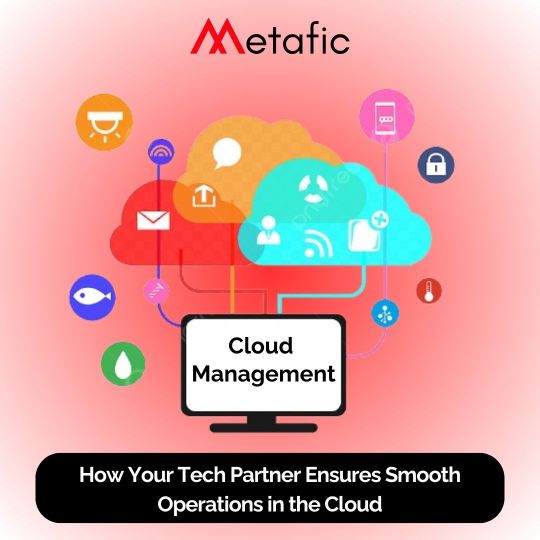#cloud infrastructure management services
Explore tagged Tumblr posts
Text

Unlocking efficiency, scalability, and security across sectors through optimized cloud infrastructure management solutions.
#cloud infrastructure setup company#Cloud Infrastructure Setup#cloud infrastructure services#cloud infrastructure management services#cloud infrastructure entitlement management#cloud infrastructure management in cloud computing#cloud management outsourcing services#cloud management outsourcing#Cloud computing service provider#Cloud infrastructure provider
0 notes
Text
1 note
·
View note
Link
Explore the technologies enhancing Financial Services and BFSI sector including the Financial Services cloud. Features including account administration, financial planning tools, portfolio management, and compliance monitoring are available in the Salesforce Financial Services Cloud. To offer a complete solution for financial institutions, it also interfaces with other Salesforce products like Marketing Cloud and Sales Cloud.
#salesforce wealth management#Financial Services Cloud#Financial Services Cloud Trends#Salesforce Financial Services Cloud#Future Technolgy#Financial Services#Technolgy Trends#Artificial intelligence#Low-Code#No-Code#Low-Code Solutions#No-Code Solutions#Financial institutions#NBFCs#Assets management#Cloud implementation#Cloud-based infrastructure#Technology Adaptation#AWS financial services#Financial cloud salesforce#Cloud financial services#Salesforce for financial advisors#Financial cloud computing#Cloud based financial services#Salesforce finance#Salesforce FSC
2 notes
·
View notes
Text
TOP BROADCASTING SOLUTION PROVIDER FOR PROFESSIONAL LIVE BROADCASTS
Streampurple’s broadcasting software solution transforms how you stream live content. With cutting-edge technology, we offer a scalable platform that guarantees high-quality, seamless broadcasting for any event. Whether you’re streaming sports, conferences, or entertainment, our solution provides the reliability and flexibility you need.
Stream Purple is the broadcasting solution provider you need to grow your video viewership on social media and beyond. We offer our broadcasting services to clients across multiple industry verticals, such as education, entertainment, enterprise, corporate, election surveillance, social media coverage, and more..
Our platform supports a variety of use cases, from virtual classrooms and online conferences to live sports events and entertainment shows. By leveraging our robust infrastructure, you can deliver seamless, high-quality streaming experiences to your audience, no matter where they are.
In addition to technical excellence, Stream Purple offers comprehensive customer support and consulting services. Our team of experts is dedicated to helping you optimize your streaming strategy and achieve your broadcasting goals.
Live broadcast solutions
Live streaming broadcast solutions
Real-time live broadcast services
Live video broadcasting solutions
Professional live broadcast solutions
Live event broadcasting solutions
Live broadcast technology
Live streaming platforms for broadcast
Live broadcast streaming services
Address: MNG Tower, 2nd Floor, Plot no. A-2, Sector-17, Dwarka,
South West Delhi, New Delhi-110078
Call: +91-9650082579
#Cloud-based live broadcast solutions#High-definition live broadcast solutions#Live broadcast content management#End-to-end live broadcast solutions#Live broadcast service providers#Live broadcast video solutions#Remote live broadcast solutions#Live broadcast integration services#Mobile live broadcast solutions#Live broadcast softwar#Broadcasting solutions#Digital broadcasting solutions#Professional broadcasting solutions#Broadcast technology solutions#Video broadcasting solutions#IPTV broadcasting solutions#Satellite broadcasting solutions#Broadcast equipment solutions#Broadcast transmission solutions#Streaming broadcasting solutions#Cloud broadcasting solutions#Broadcast automation solutions#Broadcast network solutions#Broadcasting software solutions#Media broadcasting solutions#Broadcast video solutions#Broadcast infrastructure solutions#Broadcast service solutions#OTT broadcasting solutions#Broadcasting system solutions
0 notes
Text
Comprehensive IT Infrastructure Solutions by Vivency Technology LLC
Vivency Technology LLC specializes in delivering tailored IT infrastructure solutions to empower businesses and organizations. With a focus on building, managing, and optimizing IT systems, our services are designed to meet diverse needs and requirements. From advanced networking and server management to cloud integration and security solutions, Vivency Technology LLC offers a comprehensive range of services to ensure seamless, efficient, and scalable IT infrastructure. Partner with us to unlock the full potential of technology for your organization.


#IT infrastructure solutions#Vivency Technology LLC#IT system optimization#Networking solutions#Server management services#Cloud integration solutions#IT infrastructure management#Scalable IT systems#IT security solutions#Customized IT infrastructure#Business IT support#Advanced IT solutions#IT infrastructure services#IT infrastructure provider#IT optimization strategies
0 notes
Text
#web development service#e commerce website development service#web development company#web app development services#web and mobile app development services#it management service#it management solutions#it infrastructure management services#it service management consulting#it service operations management#cyber security service#cyber security company#cyber security solution#cyber security service provider#cyber security consultation#cloud computing services#cloud computing companies#best cloud service provider#cloud computing security#best cloud computing services#iot services#iot solutions#iot development services#iot software development#iot network solutions#hr services#staffing service provider#hr recruitment solutions#hr services company#staffing solutions provider
0 notes
Text
AI Hyperscaler Nscale Secures $155 Million in Series A Funding to Fuel Expansion and Meet AI Compute Demand
New Post has been published on https://thedigitalinsider.com/ai-hyperscaler-nscale-secures-155-million-in-series-a-funding-to-fuel-expansion-and-meet-ai-compute-demand/
AI Hyperscaler Nscale Secures $155 Million in Series A Funding to Fuel Expansion and Meet AI Compute Demand
Nscale, a leading innovator in AI hyperscale infrastructure, has announced the completion of a $155 million Series A funding round. Led by Sandton Capital Partners, with participation from Kestrel, Bluesky Asset Management, and Florence Capital, this oversubscribed round positions Nscale to expand its sustainable and scalable AI infrastructure across Europe and North America. The company is uniquely addressing the surging demand for high-performance AI computation, driven by the explosive growth of generative AI applications and large-scale workloads.
Founded on the principles of innovation and environmental responsibility, Nscale operates as a fully integrated hyperscaler. Its platform manages every layer of AI infrastructure, from energy-efficient data centers to advanced GPU superclusters and orchestration software. This end-to-end approach not only ensures maximum efficiency but also aligns with Nscale’s commitment to sustainability, leveraging 100% renewable energy to minimize environmental impact.
Pioneering the Future of AI Compute
Nscale has quickly distinguished itself as a critical player in the AI ecosystem by addressing the complex challenges of AI workload scalability. Its cutting-edge data centers, strategically located in the Arctic Circle, leverage natural cooling and renewable energy sources, significantly reducing operational costs and carbon emissions. These facilities form the backbone of Nscale’s robust platform, which supports the full lifecycle of AI model development, training, fine-tuning, and inference.
The company’s offerings include:
GPU Nodes: High-performance compute resources using state-of-the-art GPUs, such as AMD MI300X and NVIDIA H100, tailored for AI and HPC workloads.
Integrated AI Marketplace: A curated selection of tools and frameworks, including TensorFlow and PyTorch, optimized for rapid development and deployment.
Serverless and Dedicated Inference: Scalable solutions designed for low-latency AI inference, enabling cost-effective deployment of generative AI models.
Advanced Orchestration: Tools like Kubernetes and SLURM for efficient container management and workload scheduling, ensuring seamless scalability and performance.
Joshua Payne, CEO of Nscale, highlighted the unique value the company brings to the AI infrastructure market: “We design our systems end-to-end, from the data center to the GPU clusters, providing bespoke solutions for customers at any scale. This vertical integration allows us to deliver faster deployments, better cost-efficiency, and unparalleled performance.”
Growth Fueled by Strategic Funding
Since its launch from stealth in May 2024, Nscale has experienced unprecedented demand for its AI infrastructure. The Series A funding will support the development of 120MW of data center capacity in 2025, part of a broader 1.3GW pipeline spanning Europe and North America. These facilities are purpose-built for large-scale AI applications, leveraging advancements like closed-loop direct liquid cooling to maximize performance while reducing environmental impact.
“The AI market is scaling rapidly, and so are we,” Payne stated. “This funding enables us to meet the increasing demands of global enterprises, governments, and AI innovators who need bespoke infrastructure solutions to unlock the next wave of AI capabilities.”
Sustainability at the Core
Central to Nscale’s strategy is its unwavering commitment to sustainability. By locating its data centers in the Arctic Circle, the company reduces its reliance on traditional cooling methods, instead utilizing the natural climate for energy-efficient operations. Additionally, all facilities are powered by renewable energy, reflecting Nscale’s vision to empower industries with eco-friendly computation solutions.
This commitment to sustainability has already attracted global attention. Nscale’s Svartisen Cluster was recently recognized in the 2024 Top500 list of the world’s most powerful supercomputers, underscoring the company’s ability to deliver high-performance AI infrastructure while adhering to stringent environmental standards.
A Global Vision for AI Innovation
Nscale is also expanding its global footprint through strategic partnerships. Recently, the company announced a collaboration with Open Innovation AI in the MENA region, targeting the deployment of 30,000 GPUs over the next three years. These efforts are part of Nscale’s broader goal to enable scalable AI innovation across industries such as healthcare, finance, gaming, and autonomous vehicles.
The upcoming launch of Nscale’s public cloud service in Q1 2025 is another milestone. This new offering will provide developers with access to flexible, purpose-built environments for training and inference, further enhancing the platform’s appeal to a diverse range of users.
Positioned to Lead the AI Revolution
Nscale’s vertically integrated approach allows it to deliver bespoke solutions tailored to the needs of its clients, from startups to multinational enterprises. By controlling every layer of its infrastructure, the company can ensure optimal performance, cost efficiency, and sustainability.
Rael Nurick, Co-Founder of Sandton Capital Partners, emphasized the importance of this strategy: “Nscale’s commitment to sustainability, combined with its industry partnerships and innovative infrastructure design, positions it as the hyperscaler of choice for enterprises scaling AI globally.”
With the $155 million Series A funding, Nscale is poised to redefine the future of AI infrastructure. By empowering organizations with cutting-edge tools and sustainable solutions, the company is not only meeting the needs of today’s AI-driven world but also setting new standards for the industry.
#000#2024#ai#ai inference#AI Infrastructure#AI innovation#ai model#AI models#amd#America#applications#approach#Arctic#Art#attention#autonomous#autonomous vehicles#carbon#carbon emissions#CEO#climate#Cloud#cloud service#cluster#clusters#Collaboration#computation#container#container management#cooling
0 notes
Text
Understand the advantages and challenges of cloud-managed services to make informed decisions for your IT infrastructure.
#cloud managed services#managed cloud solutions#pros and cons guide#cloud infrastructure#IT managed services
0 notes
Text
Cloud Native Security Safeguarding Your Data In The Digital Age.
Explore cloud-native security strategies to protect digital data, emphasizing integrated solutions and a proactive security-first approach in the cloud era.
Know more - https://optit.in/cloud-native-security-safeguarding-your-data-in-the-digital-age/

#cloud migration#consulting#devops#it infrastructure#devops service#cloud infrastructure#optit#cloud cost optimization#infrastructure management
0 notes
Text
Enhance your business operations with Cloud Management Outsourcing! Drive efficiency and scalability effortlessly. #CloudManagement #Efficiency #Scalability
#cloud infrastructure setup company#Cloud Infrastructure Setup#cloud infrastructure services#cloud infrastructure management services#cloud infrastructure entitlement management#cloud infrastructure management in cloud computing#cloud management outsourcing services#cloud management outsourcing#Cloud computing service provider#Cloud infrastructure provider
0 notes
Text
1 note
·
View note
Text

Journey of Cloud Computing: A Visual Guide
Dive into our curated collection of images showcasing the essential elements of Cloud Management. From the intricacies of Cloud Infrastructure to the importance of a Tech Partner, these visuals capture the essence of achieving Smooth Operations in the Cloud and mastering Cloud Computing Basics.
#Cloud Management#Tech Partner#Smooth Operations in the Cloud#Cloud Services#Cloud Solutions#Cloud Infrastructure#Cloud Computing Basics
0 notes
Text
Infrastructure as a Service (IaaS)

Unlock unparalleled business computing potential with Infrastructure as a Service (IaaS), the savvy and budget-friendly solution for accessing cutting-edge capabilities. Century Solutions Group leads the pack in Atlanta, GA providing top-tier IaaS computing, offering swift and economical access to storage, data transfer, virtual desktop infrastructure, cloud network security, and network infrastructure essentials.
Learn more: https://centurygroup.net/cloud-computing/infrastructure-as-a-service/
#infrastructureasaservice #platformasaservice #cloudcomputing #iaas #softwareasaservice #paas #saas #cloudsolutions #cloudtechnology #hybridcloud #datasecurity #serverlesscomputing #cloudservices #cloudmigration #cloudmanagement
#Infrastructure as a Service#Platform as a Service#IaaS#managed it services#cybersecurity#cloud technology services#managed it solutions#data backup
1 note
·
View note
Text
What Should You Know About Edge Computing?
As technology continues to evolve, so do the ways in which data is processed, stored, and managed. One of the most transformative innovations in this space is edge computing. But what should you know about edge computing? This technology shifts data processing closer to the source, reducing latency and improving efficiency, particularly in environments where immediate action or analysis is…
#5G#AI#AI edge#AI integration#automation#autonomous vehicles#bandwidth#cloud#cloud infrastructure#cloud security#computing#computing power#data generation#data management#data processing#data storage#data transfer#decentralization#digital services#digital transformation#distributed computing#edge analytics#edge computing#edge devices#edge inferencing#edge networks#edge servers#enterprise data#Healthcare#hybrid cloud
0 notes
Text
Dominating the Market with Cloud Power

Explore how leveraging cloud technology can help businesses dominate the market. Learn how cloud power boosts scalability, reduces costs, enhances innovation, and provides a competitive edge in today's digital landscape. Visit now to read more: Dominating the Market with Cloud Power
#ai-driven cloud platforms#azure cloud platform#business agility with cloud#business innovation with cloud#capital one cloud transformation#cloud adoption in media and entertainment#cloud computing and iot#cloud computing for business growth#cloud computing for financial institutions#cloud computing for start-ups#cloud computing for travel industry#cloud computing in healthcare#cloud computing landscape#Cloud Computing solutions#cloud for operational excellence#cloud infrastructure as a service (iaas)#cloud migration benefits#cloud scalability for enterprises#cloud security and disaster recovery#cloud solutions for competitive advantage#cloud solutions for modern businesses#Cloud storage solutions#cloud technology trends#cloud transformation#cloud-based content management#cloud-based machine learning#cost-efficient cloud services#customer experience enhancement with cloud#data analytics with cloud#digital transformation with cloud
1 note
·
View note
Text
CAPEX vs. OPEX: Understanding Telecom Expense Management
In the world of Telecom Expense Management (TEM), the distinction between Capital Expenditures (CAPEX) and Operational Expenditures (OPEX) plays a crucial role in optimizing infrastructure costs. What is CAPEX? CAPEX involves upfront investments in long-term telecom infrastructure, such as purchasing hardware or building private networks. These assets provide long-term value and are capitalized…
#CAPEX#Cloud Services#Cost Optimization#Flexibility#Long-Term Investment#Managed Services#Network Infrastructure#OPEX#Scalability#SD-WAN#SolveForce#Telecom Costs#Telecom Expense Management#Telecom Strategy#VoIP
0 notes